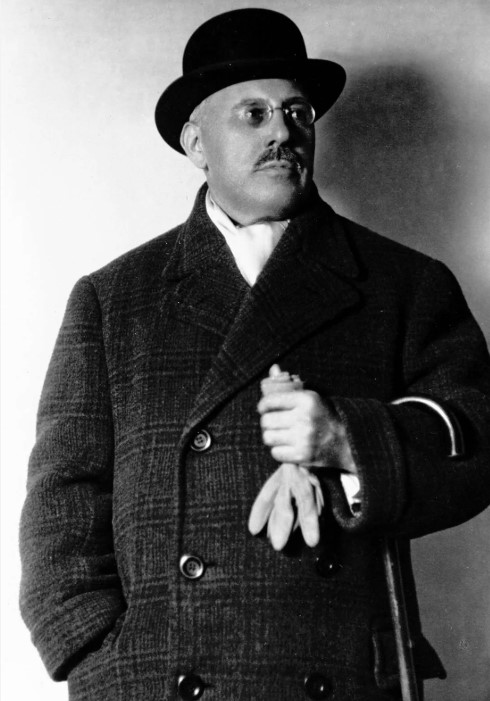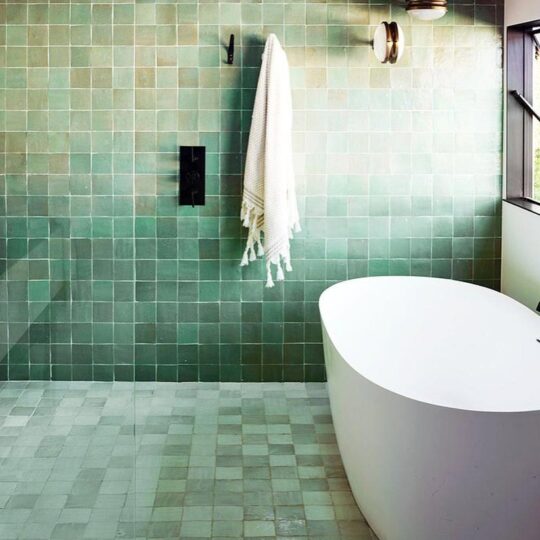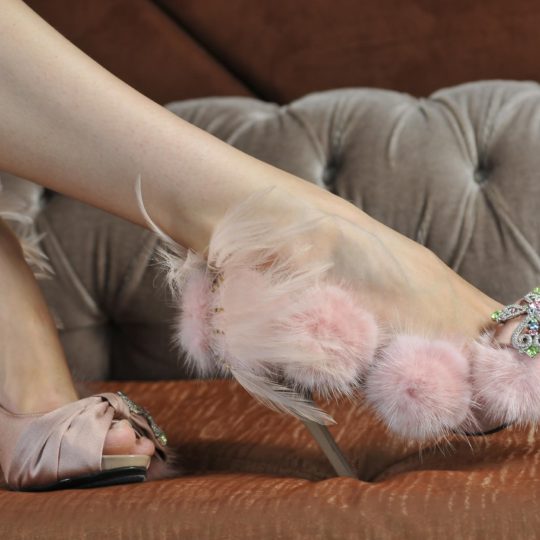There are trends that come and go. But some things are timeless. Iconic furnishings never go out of style and are repeatedly associated with prominent architects and designers. From mid-century modern designs to contemporary pieces, iconic furniture has a long history.
Architects like Le Corbusier and Frank Gehry have created timeless pieces that are still used and collected today. Their designs pushed the bar and created beautiful pieces that blended both form and function.
Check out the history of some of the most iconic furniture pieces, the designers who created them and the influence they have on current design trends. Which one is your favorite?
#1 Charles and Ray Eames – The Eames Lounge Chair (1)
Charles and Ray Eames are behind some of the 20th century’s most defined architecture and design movements. However, the husband-and-wife duo are most known for their Eames Chair and ottoman which can be found in many homes today, as well as the Museum of Modern Art in New York.
The pair created a modern lounge during a time of minimalism – The Eames Lounge Chair – which had “the warm receptive look of a well-used first baseman’s mitt”. The team released the design to Herman Miller in 1956 and it is still being made in Michigan today.
#2 Eero Saarinen – The Tulip Chair (2)
After traveling to Paris in 1929, Saarinen returned to Michigan to teach at Cranbook Academy of Arts.
During his time in Michigan, Saarinen met Charles Eames and they quickly became friends. Both wanting to push the bar creatively, they ended up collaborating on several projects, one of which was the Tulip Chair.
Saarinen felt there was a “ugly, confusing, unrestful world” underneath dining tables. This was his resolution: A modern molded fiberglass seat with a molded cast aluminum base.
#3 Arne Jacobsen – The Egg Chair (3)
Arne Emil Jacobsen (1902 – 1971) was a Danish architect and designer remembered for his contribution to architectural Functionalism and for the worldwide success he enjoyed with simple but effective chair designs.
Most notably, Jacobsen designed the Egg Chair in 1959 for the Radisson SAS hotel in Copenhagen, Denmark. He was commissioned to design every element of the building including the cutlery that would be used in the restaurant, the lighting and even the ashtrays! He seized the opportunity to put into practice some ideas he had about how architecture and furniture could be better integrated.
Having experimented with clay in his garage, Jacobson tested and perfected the shape of his Egg Chair, before moving on to sculpting the foam. The chair broke all design conventions with its curving shape and is a design classic that has become one of the most recognizable and copied chairs of all time.
#4 Josef Hoffman – The Club 1910 Chair (4)
Josef Hoffmann (15 December 1870 – 7 May 1956) was an Austrian Moravian architect and designer who formed both the Vienna Succession and Wiener Werkstatte. Hoffman was primarily characterized by strict geometrical lines, a search for simplicity, and the typical reduction to black and white. He overcame the duality of tradition and modernity.
The design of his club chair from 1910 is a testament to Josef Hoffmann’s diverse work and design motifs, the latter solved the task with aplomb. For the generous dimensions of the furniture pointed to the designer. But the seam strips that divided the seat and backrest gave the fauteuil a completely new touch – the “Quadratl-Hoffmann” showed that he could also do things differently.
#5 Achille Castiglioni – The Archo Lamp (5)
Born in 1918, Achille Castiglioni was one of the most important Italian designers and architects. He designed objects, lamps and furniture for many companies such as Kartell, Flos, Zanotta, Knoll and Alessi, just to name a few.
Castiglioni, together with his brother Pier Giacomo, designed the Arco Lamp in1962 for the company FLOS. On a walk in Paris in the early 1960s, the Italian brothers had a light-bulb moment. In the elegant arch of the city’s streetlamps, they found an enduring design solution—a directional light that didn’t require ceiling suspension!
Enter: Arco, a flexible floor lamp that emerged from a hunk of marble and could function over a dining table or as a reading light. No ceiling fittings needed.
#6 Frank O. Gehry – The Wiggle Chair (6)
Canadian-born American Frank O. Gehry is a Pritzker Prize-winning architect and designer. In fact, a number of his buildings, including his private residence in Santa Monica, California, have become world-renowned attractions. His works are considered among the most important of contemporary architecture.
When a group of artists and scientists from NASA called a meeting at artist Robert Irwin’s studio in 1969, they asked architect Frank Gehry to give the place a quick makeover. Gehry came up with something simple yet subtly futuristic: seating made from stacks of cardboard, a humble material he kept around for making models. This became known as the Wiggle Chair.
“I discovered that by alternating the direction of layers of corrugations, the finished board had enough strength to support a small car, and a uniform, velvety texture on all four sides,” he told The Christian Science Monitor in 1972. “I found I could cut these edgeboard sections into geometrical forms, or bend them into sculptural, ribbon-candy folds.” So fun!
#7 Vico Magistretti – The Atollo Table Lamp (7)
Born in Italy, Magistretti was a son of an Architect. He taught for 20 years at the Royal College of Arts (RCA) in London and was appointed as a Royal Designer for Industry (RDI) (is a distinction established by the British Royal Society of Arts in 1936, to encourage a high standard of industrial design and enhance the status of designers. It is awarded to people who have achieved “sustained excellence in aesthetic and efficient design for industry).
Magistretti was at the forefront of forging relationships between designers and producers enabling the mass production of items using innovating materials.
Magistretti designed the Atollo Table Lamp for the Italian design company Oluce in 1977. Its bold and decorative silhouette emits a soft, diffused light. Now a collectors’ piece, the lamp is available in black, white or gold and is flexible to fit any room on any occasion.
#8 Le Corbusier – The Model LC4 Chaise Longue (8)
Charles-Edouard Jeanneret (1887–1965), better known as Le Corbusier, was a Swiss-French architect, designer, painter, urban planner, writer and one of the pioneers of modern architecture. His career spanned five decades and he designed buildings in Europe, Japan, India and North and South America. Le Corbusier also designed well-known furniture such as the Model LC4 Chaise Longue Chair.
Le Corbusier’s ten-year partnership with Swiss architect Pierere Jeanneret (1896-1967) and French architect and designer Charlotte Perriand 1903–1999) resulted in the design of the iconic Model LC4 Chaise Longue Chair.
The longue was designed to echo the natural curves of the human body in repose, the moveable frame of this iconic chaise adjusts along the base, following your every move from upright sitting to full recline. The LC4 is included in the permanent collection of the Museum of Modern Art in New York, alongside the Eames Longue Chair.
#9 Isamu Noguchi – The Noguchi Coffee Table (9)
Japanese American artist, industrial designer and sculptor Isamu Noguchi believed that, “everything is sculpture.” And he created sculptures out of anything he could get his hands on -stone, metal, wood, clay, bone, paper. He used his talents to create an iconic coffee table.
The Noguchi table was an evolution of a rosewood and glass table Noguchi designed in 1939 for A. Conger Goodyear, president of the Museum of Modern Art.The design team at Herman Miller was so impressed by the table’s use of bio morphism that they recruited Noguchi to design a similar table with a freeform sculptural base and biomorphic glass top for use in both residential and office environments.
Comprised of a wooden base with two identical curved wood pieces and a heavy plate glass top, the Noguchi table became one of Herman Miller’s most iconic and successful designs. Production ceased in 1973, and the piece became an instant collectible. Herman Miller reissued it in 1980 in a limited edition of about 480 tables. The table was reintroduced again in 1984 for the “Herman Miller Classics” line, and has been in production ever since.
#10 Marcel Breuer – The Model B3 Chair (10)
Marcel Breuer was a Hungarian-American modernist architect and furniture designer. He is regarded as one of the great innovators of modern furniture design and one of the most-influential exponents of the International Style.
His work includes art museums, libraries, college buildings, office buildings, and residences. At the Bauhaus he designed the Wassily Chair, which The New York Times have called one of the most important chairs of the 20th century.
Breuer designed the Model B3 Chair or Wassily Chair in 1925-1926. Inspired by an Adler bicycle, Breuer used tubular steel to create the frame and fabricated it using techniques from local plumbers. The Model B3 Chair is among his first designs and remains amongst the most identifiable icon of the modern furniture movement.
For assistance incorporating just the right iconic piece(s) for your home, contact Talie Jane Interiors at 855-TALIE JANE (855-825-4352).
Sources
- https://www.bbc.com/culture/article/20171218-charles-and-ray-eames-the-couple-who-shaped-the-way-we-live
- https://www.knoll.com/designer/Eero-Saarinen
- From the Archive: A short history of the iconic Egg Chair by Arne Jacobsen – ICON Magazine (iconeye.com)
- https://en.wikipedia.org/wiki/Austrians
- https://www.architecturaldigest.com/story/how-achille-and-pier-giacomo-castiglionis-1962-arco-light-became-a-living-room-essential https://www.interiornotes.com/history-design-arco-floor-lamp/ https://www.architecturaldigest.com/story/the-story-behind-frank-gehrys-iconic-wiggle-design https://en.wikipedia.org/wiki/Vico_Magistretti https://www.moma.org/artists/3688
- Pierre Jeanneret – Wikipedia Le Corbusier’s Iconic Modern Architecture and Design | Architectural Digest
- https://www.artsy.net/artwork/isamu-noguchi-peking-scroll-drawing-ye-kau-jong-robed-man-sitting-cross-legged-resting-on-fist
https://en.wikipedia.org/wiki/Noguchi_table
https://www.hermanmiller.com/products/tables/occasional-tables/noguchi-table/design-story/
https://sonyawinner.com/blog/design-inspiration-the-iconic-noguchi-table/
https://www.fastcompany.com/3039963/the-secret-history-of-the-noguchi-table
https://shop.noguchi.org/products/noguchi-coffee-table-black - https://www.knoll.com/product/wassily-chair
https://www.iconeye.com/design/a-brief-history-of-marcel-breuers-wassily-chair
https://www.artsy.net/artwork/marcel-breuer-early-canvas-model-b3-wassily-chair-black-eisengarn
https://en.wikipedia.org/wiki/Wassily_Chair
https://www.knoll.com/shop/classics/marcel-breuer-collection
Images: Pinterest, Wikipedia.
Article by the Talie Jane Interiors team.



























Sorry, the comment form is closed at this time.